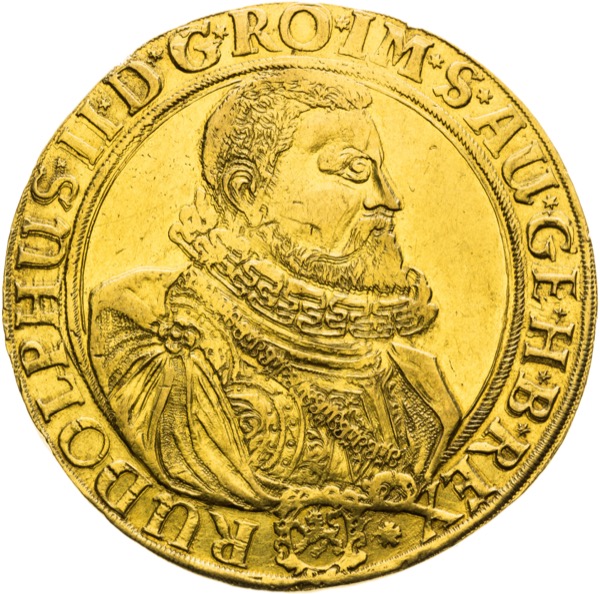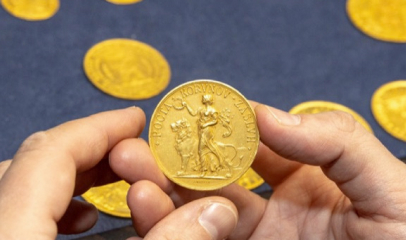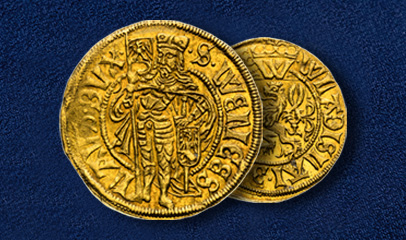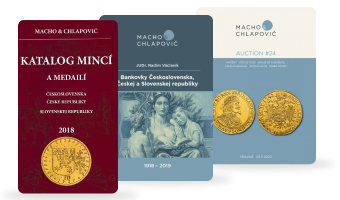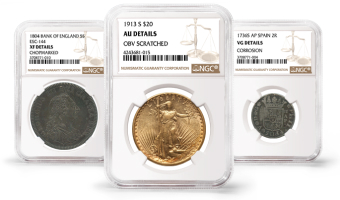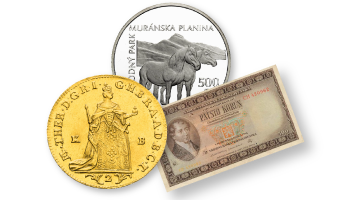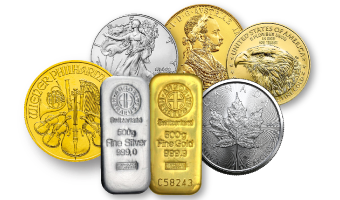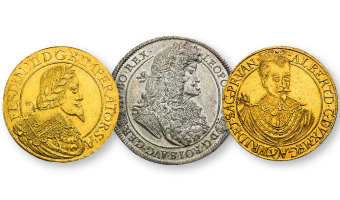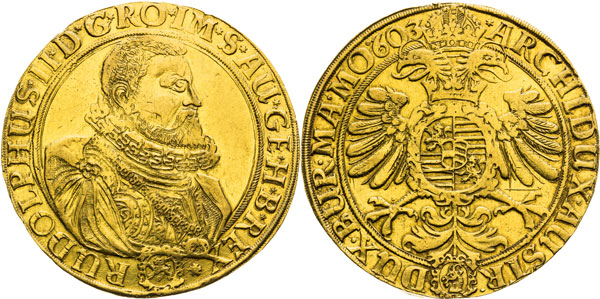
The minting of coins with the new design
By a decree of 2 November 1602, all Bohemian mints were ordered to mint coins with a new design, probably based on the design by Jan Konrád Greuter. This talented goldsmith and flan cutter came to Prague at the personal request of Emperor Rudolf II around 1601 from the service of the Electoral Palatinate. He replaced David Engelhart as flan cutter at the Prague mint no later than in 1602. In November 1602, the Prague mintmaster Jan Lasanz even recommended to the Bohemian Chamber that Greuter should supply all the mints with coin dies. Greuter’s work was well received, so it is not surprising that the royal officials agreed. As a result, Greuter’s dies were in use at all mints as soon as in 1603.
The minting of coins with the new design brought about one significant visual change. The non-heraldic eagle designed by Antonio Abondio and used for more than two decades on the reverse side of thalers minted at the Kuttenberg, Joachimsthal and Budweis mints, was replaced by a heraldic eagle in 1603. The artistic design of Bohemian coins was thereby largely unified from 1603 onwards. In the short period between the issue of the Bohemian Chamber’s decree on the uniform design of Bohemian coins and Greuter’s delivery of coin dies to all mints, mint officials and die manufacturers, especially those of the Kuttenberg and Joachimsthal mints, had to address the new requirements.
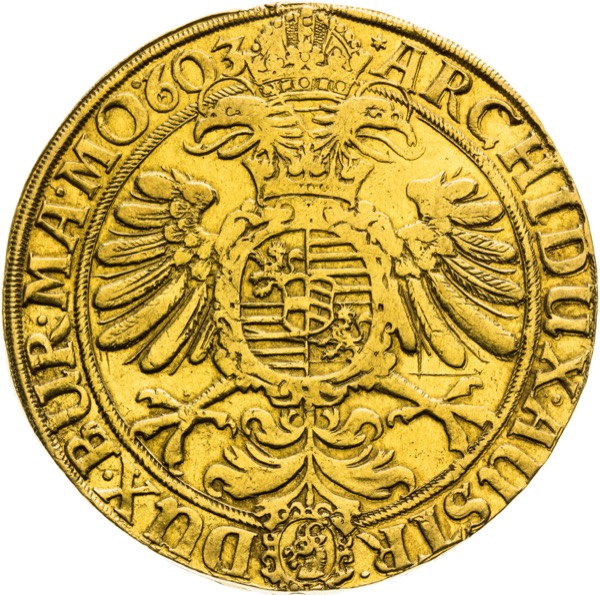
Kuttenberg - Gerhnhardt’s dies
The situation in Kuttenberg was rather peculiar. Following the death of their long-time die maker, Jiřík sr. of Řásná, in 1599, Jan Klement, who had previously worked in Řásný’s workshop, was commissioned to supply the dies. At the same time, however, other dies were delivered to the mint by Magdalena, the surviving spouse of Řásný. Written sources provide only patchy information about the supply of dies after 1600. However, it is certain that there were disputes between the widow and Jan Klement, which had to be resolved by the responsible officials. Klement was opposed by the mint officials, Magdalena by the officials of the Bohemian Chamber.
It seems that the goldsmith Jindřich Gernhardt tried to take advantage of their dispute after the new decree concerning the artistic design of Bohemian coins was issued. Little is known about him. After the publication of the new decree, he delivered several dies with the year 1603 and the mintmark of Hans Spiess to the Kuttenberg mint and certainly hoped to obtain more lasting orders for his workshop. However, his dies were eventually used only to a very limited extent. It is reasonable to assume that these were more or less just pattern strikes. The quality of his work was likely unsatisfactory and the bills issued for the supply of the dies were paid by the Bohemian Chamber with a delay of almost three years. The dismissal of Hans Spiess from the position of the Kuttenberg mintmaster in mid-1603 may have contributed to Gernhardt’s bad luck, as the new mintmaster, David Enderle, was probably no longer interested in his services.
Two rather exceptional strikes - the triple thaler and the 10 ducat
In addition to the thalers with the usual depiction of the Emperor’s bust and the heraldic eagle based on the new design, Gerhnhardt’s dies produced two rather exceptional strikes. These are the triple thaler and especially the 10 ducat minted with the same thaler dies. The visual design of the coins is quite extraordinary and shows the representative nature of both denominations known only in a few specimens. Perhaps they were gifts to court officials or even to the Emperor himself. Moreover, the use of gold is also very unusual, as it was only seen a few times in the 400-year history of the Kuttenberg mint, and even then in a very marginal way. For a long time, the mint processed silver from local mines and the minting of gold was left to the Prague mint.
In the 31st auction, this extremely rare Kuttenberg 10 Ducat 1603 of Mintmaster Jan Špis will be auctioned as item No. 146. The starting price of this extraordinary piece is 80,000 euros.
